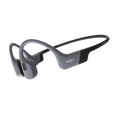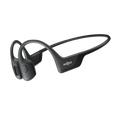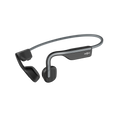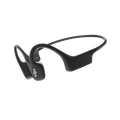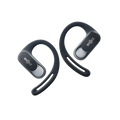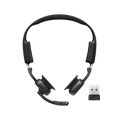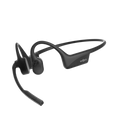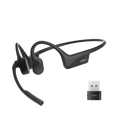 November is here and the holidays are quickly approaching. With the crafting of children’s Christmas lists and the forging of fitness goals, you may find yourself in store for a new pair of headphones.
November is here and the holidays are quickly approaching. With the crafting of children’s Christmas lists and the forging of fitness goals, you may find yourself in store for a new pair of headphones.
There’s no shortage of headphone brands - you could probably name half-a-dozen off the top of your head - Beats By Dre, Skullcandy, Bose and Apple. There’s also no shortage of headphone designs - earbuds, canal buds, lightweight headphones and full-size headphones. Many of us have tried most, if not all of these headphone types.

This article is going to talk about the benefits of a headphone design you maybe haven’t tried before - bone conduction.
What Is Bone Conduction?
Sound is made up of vibrations. When you hear the radio playing in a nearby car, when you hear a Golden Retriever barking across the street, when you hear bacon sizzling on a frying pan, you’re hearing through vibrations that are being sent through the air and into your eardrums.
Some of these vibrations reach your cochlea or inner ear. This is essentially how traditional headphones, or air conduction headphones, work.

Bone conduction offers a different way of hearing. Instead of sending vibrations through the eardrums, bone conduction sends vibrations through your cheekbones and into your cochleas, bypassing the eardrum altogether. You’re hearing the same way you’re able to hear your voice when you plug your own ears. (Try it!)

Bone conduction technology has been around for decades. You might have seen it used in some hearing aids. Google Glass adopted this technology as well. It has only recently been re-purposed for headphones in the early 2000s.
So what benefits do bone conduction headphones offer?
#1 Increased Situational Awareness
This is a big one!
Immersing yourself in the latest playlist or compelling audiobook is a great escape when walking, running, cycling or driving, but it’s a habit that greatly increases the risk of an accident; closing yourself off to the outside world also closes you off to trains, horns, and hollers. 
According to a 2012 study from the University of Maryland School of Medicine and the University of Maryland Medical Center in Baltimore, 70 percent of these accidents resulted in death.
With bone conduction headphones, there are no speakers going over or into your ears, depleting your senses. Instead, the transducers sit on your cheekbones directly in front of your ears, leaving your ears completely open to your surroundings.
If you’re out for a jog, you can hear another jogger approaching behind you. If you’re cycling around town, you’re aware of the dog that broke from its leash. If you’re in construction, you can enjoy your music while still being alert to hazards. If you’re working in a cubicle, you remain connected to the office environment and approachable to your colleagues.

#2 More Comfortable Fit
Do your earbuds fall out? Do your ear canals hurt? Are full-size headphones too heavy for your morning run? Speakers getting all up in your earrings’ business?
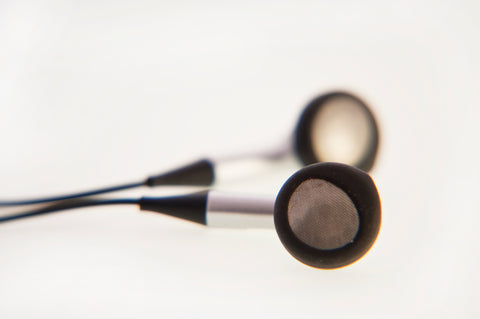
Let’s face it - most headphones don’t get their reputation for being comfortable. Few things are more annoying than running on a treadmill with your right earbud dangling by the wire because you’re actually working up a sweat and the darn things won’t stay in.
Bone conduction headphones do away with the drama by leaving your ears out of the equation. For many individuals, it’s a whole lot more comfortable.

#3 A Unique Listening Experience
Jamming out to your favorite tunes through your cochleas, while still enjoying the sounds of the outside world through your eardrums, is a unique, double-layered listening experience that's unlike any other. It's almost like having a super power. It's something you'll just have to see - or hear - to believe.

Ready to give bone conduction headphones a try?

